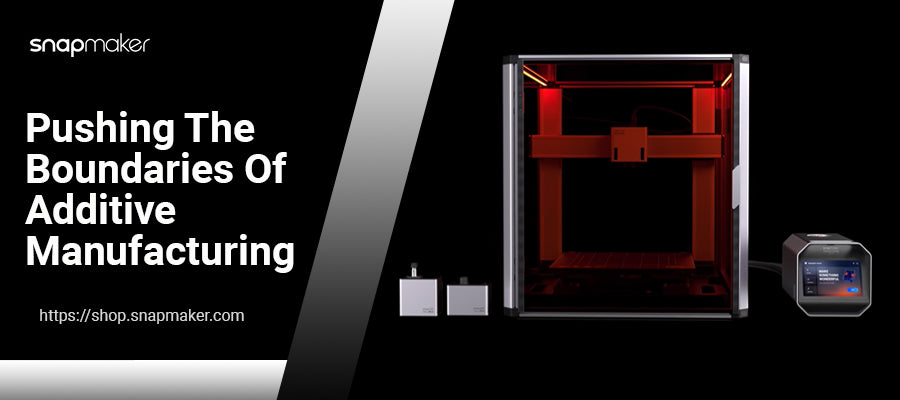All-metal 3D printers have emerged as groundbreaking technology in the world of additive manufacturing. These advanced machines offer unique capabilities and advantages that enable the production of high-quality metal parts with precision and reliability. In this article, we will delve into the key features and benefits of all-metal 3D printers, highlighting their significance in revolutionizing the manufacturing industry.
- Superior Material Compatibility: One of the primary advantages of all-metal 3D printers is their ability to work with a wide range of metal materials. Unlike traditional 3D printers that are limited to plastics or composite materials, all-metal printers can handle various metals, including stainless steel, titanium, aluminum, cobalt-chrome, and more. This versatility allows manufacturers to choose the most suitable metal for their specific application, unlocking possibilities for complex and functional metal parts.
- Exceptional Strength and Durability: All-metal 3D printers produce parts with exceptional strength and durability. By utilizing metals as the printing material, these printers create parts that exhibit properties similar to those manufactured through traditional methods, such as casting or machining. This makes all-metal 3D printing ideal for applications that require robust components, such as aerospace, automotive, and industrial sectors.
- Precision and Complex Geometries: All-metal 3D printers offer exceptional precision, enabling the production of intricate and complex geometries with high accuracy. With their precise control over printing, these printers can create parts with fine details, intricate designs, and intricate internal structures. This capability opens up new possibilities for lightweight designs, optimized structures, and improved performance in various industries.
- Enhanced Productivity and Efficiency: All-metal 3D printers are designed for productivity and efficiency. These machines often feature advanced features like multiple print heads, heated build plates, and automated calibration systems, which streamline the printing process and reduce downtime. Additionally, the ability to print complex assemblies as a single part eliminates the need for time-consuming assembly processes, further increasing productivity and reducing manufacturing costs.
- Accelerated Innovation and Time-to-Market: By leveraging all-metal 3D printers, businesses can accelerate innovation and reduce time-to-market for their products. The ability to rapidly iterate designs, produce functional prototypes, and perform quick design iterations allows for faster development cycles. This agility gives companies a competitive advantage by enabling them to respond quickly to market demands, improve product performance, and stay ahead of the competition.
4 Key Features and Advantages of an Expandable 3D Printer.
Expandable 3D printers have revolutionized additive manufacturing by providing a flexible and scalable solution to meet the changing needs of manufacturers. These machines are designed to accommodate expansion, allowing users to scale their printing capabilities in terms of build volume, functionality, and material compatibility. In this article, we will explore the key features and advantages of expandable 3D printers, highlighting their ability to unlock new possibilities in additive manufacturing.
- Scalable Build Volume: Expandable 3D printers excel in their ability to scale the build volume according to specific requirements. With modular designs, users can easily add or adjust the size of the printing area. This scalability enables the production of larger and more complex parts in a single print job, eliminating the need for assembly and maintaining design integrity. Manufacturers can now create objects of varying sizes, from small intricate components to large prototypes or even production-scale parts.
- Versatile Functionality: The versatility of expandable 3D printers lies in their capability to accommodate additional features or modules that can be integrated into the system. These modules can include advanced sensors for real-time monitoring, multi-material printing capabilities, or specialized tools for post-processing tasks like polishing or surface finishing. Expanding the printer's functionality allows users to tailor the printing process to their specific needs, enabling a wider range of applications and enhancing overall manufacturing efficiency.
- Enhanced Material Compatibility: Expandable 3D printers offer the advantage of expanding material compatibility. Through upgrades, these printers can support a broader range of printing materials, including various plastics, composites, and even metals. This expansion provides access to materials with distinct properties, enabling the production of parts with specific mechanical, thermal, or chemical characteristics. The versatility in material compatibility opens doors to industries such as aerospace, automotive, healthcare, and consumer goods, where specific material requirements are essential.
- Future-Proof Investment: Investing in an expandable 3D printer is a future-proof decision for manufacturers. As technology advances and new printing capabilities emerge, expandable printers can easily adapt and incorporate these innovations without the need for a complete system upgrade. This saves costs and ensures that businesses can remain competitive and up-to-date with the latest developments in additive manufacturing. By choosing an expandable printer, manufacturers can extend the lifespan of their equipment and continue to leverage its capabilities as their needs evolve.
